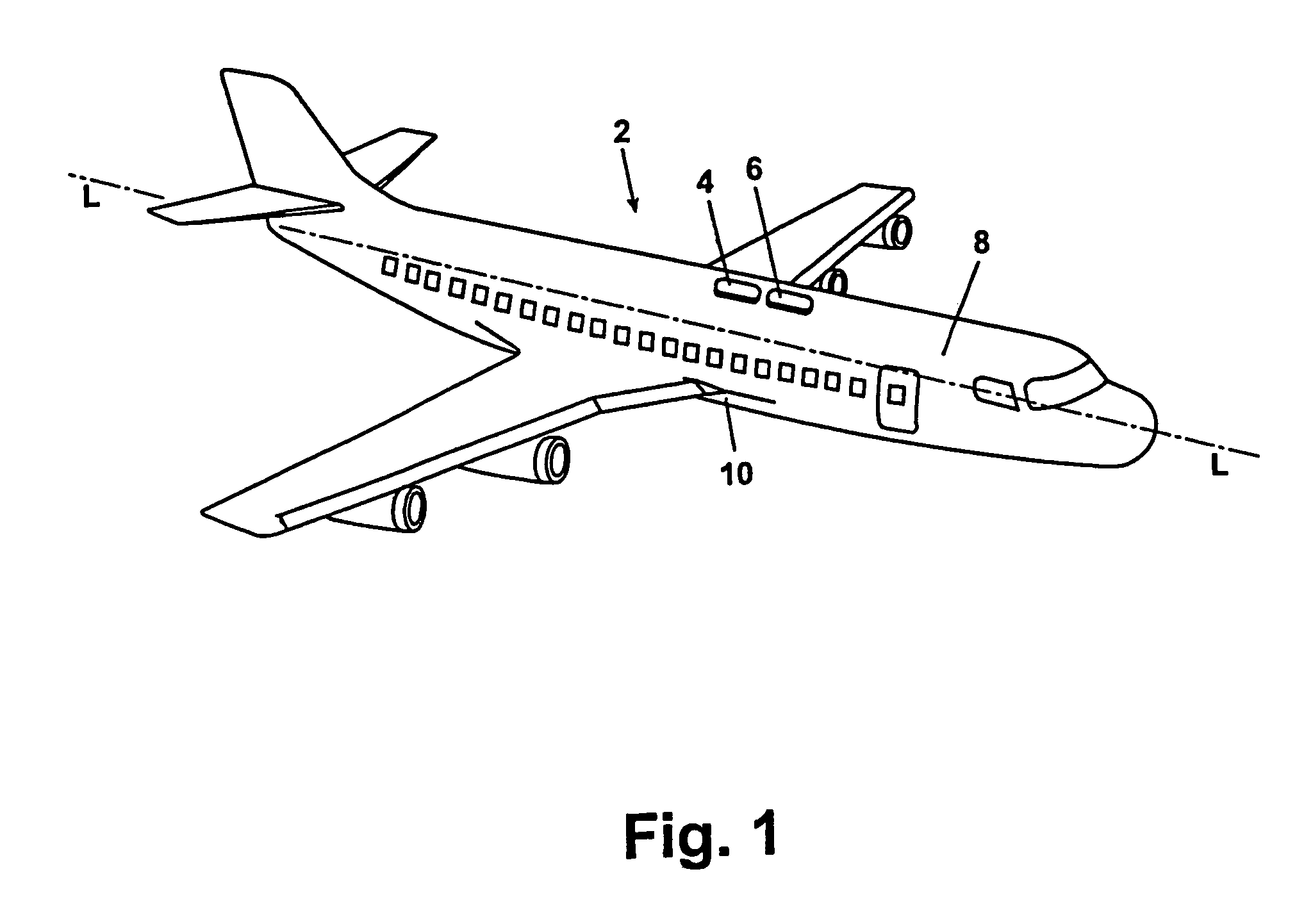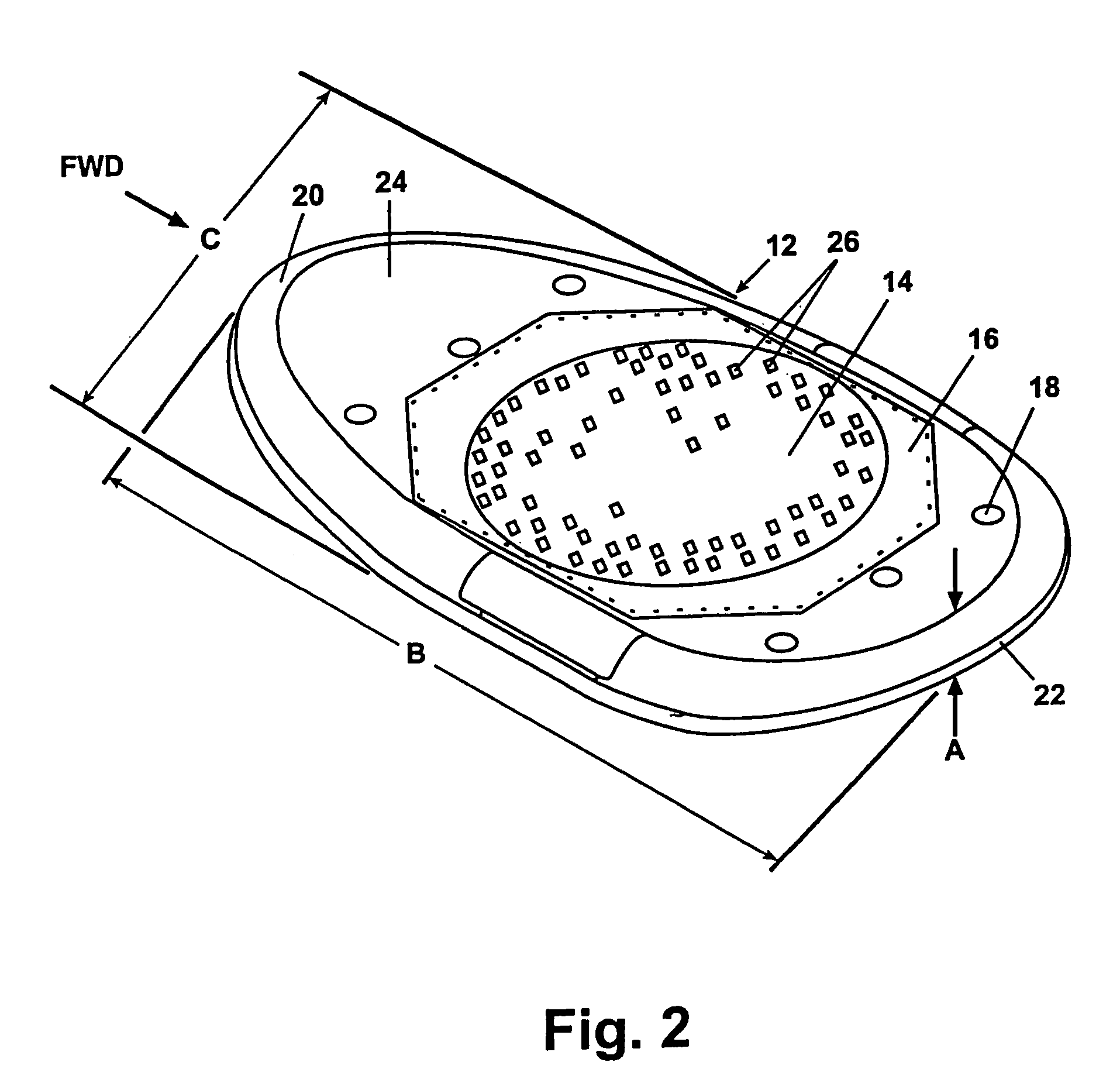Aircraft phased array antenna structure including adjacently supported equipment
a phased array and antenna technology, applied in the field of aircraft phased array antenna systems, can solve the problems of increasing the cabling weight between the antennas and their power transformers, the constraint of the overhead height of the aircraft walkway, and the aircraft that employs phased array communication antennas, so as to reduce the attenuation of signal strength, reduce the attenuation, and reduce the effect of attenuation
- Summary
- Abstract
- Description
- Claims
- Application Information
AI Technical Summary
Problems solved by technology
Method used
Image
Examples
Embodiment Construction
[0022]FIG. 1 provides transmit and receive antennas for one aspect of the present invention. An exemplary aircraft 2 is shown having an exemplary arrangement of two antennas, a transmit antenna 4 and a receive antenna 6 mounted on the outer aircraft fuselage 8. In a preferred embodiment both the external configurations of the transmit antenna 4 and receive antenna 6 have a tear-drop shape to minimize aerodynamic drag on the aircraft. The preferred location for the transmit and receive antennas is in a fore-aft, linear arrangement having both antennas located in parallel with a longitudinal axis L of the aircraft on an upper surface of the fuselage 8 and proximate to the fore-aft location along the longitudinal axis L where the leading edge of the aircraft wings 10 intersect the aircraft 2. The one or more antennas of the present invention are mounted directly to the outer fuselage 8 of the aircraft.
[0023]Referring now to FIG. 2, a tear-drop shaped antenna configuration for mounting ...
PUM
 Login to View More
Login to View More Abstract
Description
Claims
Application Information
 Login to View More
Login to View More - R&D
- Intellectual Property
- Life Sciences
- Materials
- Tech Scout
- Unparalleled Data Quality
- Higher Quality Content
- 60% Fewer Hallucinations
Browse by: Latest US Patents, China's latest patents, Technical Efficacy Thesaurus, Application Domain, Technology Topic, Popular Technical Reports.
© 2025 PatSnap. All rights reserved.Legal|Privacy policy|Modern Slavery Act Transparency Statement|Sitemap|About US| Contact US: help@patsnap.com



